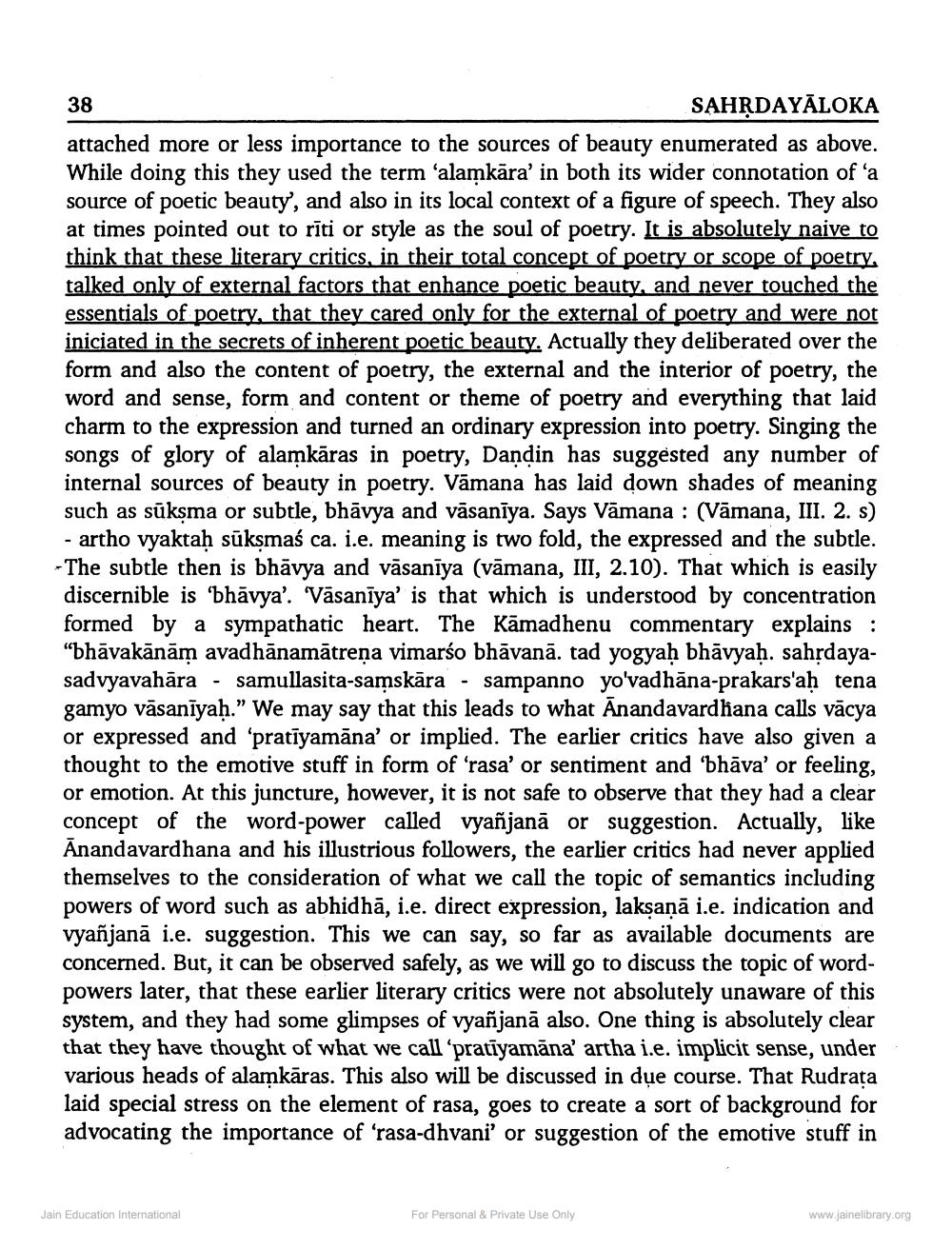________________
38
SAHRDAYĀLOKA
attached more or less importance to the sources of beauty enumerated as above. While doing this they used the term 'alamkāra' in both its wider connotation of a source of poetic beauty', and also in its local context of a figure of speech. They also at times pointed out to rīti or style as the soul of poetry. It is absolutely naive to think that these literary critics, in their total concept of poetry or scope of poetry, talked only of external factors that enhance poetic beauty, and never touched the essentials of poetry, that they cared only for the external of poetry and were not iniciated in the secrets of inherent poetic beauty. Actually they deliberated over the form and also the content of poetry, the external and the interior of poetry, the word and sense, form and content or theme of poetry and everything that laid charm to the expression and turned an ordinary expression into poetry. Singing the songs of glory of alamkāras in poetry, Dandin has suggested any number of internal sources of beauty in poetry. Vāmana has laid down shades of meaning such as sūksma or subtle, bhāvya and vāsanīya. Says Vāmana : (Vāmana, III. 2. s) - artho vyaktah sūksmaś ca. i.e. meaning is two fold, the expressed and the subtle -The subtle then is bhāvya and vāsaniya (vāmana, III, 2.10). That which is easily discernible is 'bhavya'. Vasaniya' is that which is understood by concentration formed by a sympathatic heart. The Kamadhenu commentary explains : "bhāvakānām avadhānamātrena vimarśo bhāvanā. tad yogyah bhāvyah. sahrdayasadvyavahāra - samullasita-samskāra - sampanno yo'vadhāna-prakars'ah tena gamyo vāsanīyah.” We may say that this leads to what Anandavardhana calls vācya or expressed and 'pratīyamāna' or implied. The earlier critics have also given a thought to the emotive stuff in form of 'rasa' or sentiment and 'bhāva' or feeling, or emotion. At this juncture, however, it is not safe to observe that they had a clear concept of the word-power called vyañjanā or suggestion. Actually, like Anandavardhana and his illustrious followers, the earlier critics had never applied themselves to the consideration of what we call the topic of semantics including
ord such as abhidhā, i.e. direct expression, laksaņā i.e. indication and vyañjanā i.e. suggestion. This we can say, so far as available documents are concerned. But, it can be observed safely, as we will go to discuss the topic of wordpowers later, that these earlier literary critics were not absolutely unaware of this system, and they had some glimpses of vyañjanā also. One thing is absolutely clear that they have thought of what we call 'pratīyamana' artha i.e. implicit sense, under various heads of alamkāras. This also will be discussed in dụe course. That Rudrata laid special stress on the element of rasa, goes to create a sort of background for advocating the importance of 'rasa-dhvani' or suggestion of the emotive stuff in
Jain Education International
For Personal & Private Use Only
www.jainelibrary.org




